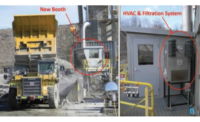You know how it goes. Your CEO returns from the annual “Performance Improvement Strategy Session†with the board of directors. She calls a Friday morning staff meeting. You’ll hear one of two introductions:
“Ladies and gentlemen, the board is very disappointed with our nine-month results. Next year we must deliver a ten-percent improvement across the board, with no budget increase over this year’s plan.â€
Or…
“Ladies and gentleman, the board is very pleased with our nine-month results. But, in view of (whatever variable you wish to choose), they’ve made it perfectly clear that our results must improve. Next year, they expect a ten-percent improvement across the board, with no budget increase over this year’s plan.â€
You return to your cube. “What’s a safety manager to do?†More training, more audits, more meetings, more discipline, more awareness campaigns — more of what hasn’t worked in the past?
Deep down, you know these things won’t produce the results required. If only there was a way to attack the real causes of loss in your organization.
Wrong-headed thinking
Well there is. But you must find a way over, under, around or through your “rock.†What? Between you and your ultimate goal lies a rock, says Brian Tracy, author of “The Creative Manager.†It’s a significant impediment that prevents you from achieving your objective.In my work with companies striving for safety excellence, I’ve learned that the biggest impediment to achieving improved performance is an inability to overcome the conventional “wiz-dumbs†of safety.
This wrong-headed thinking impedes progress in the right direction. It inhibits sustainable change. By sustainable, I mean change of the frame-bending, mind-altering type I call the “ROC†— Radical Organizational Change.
To radically revise how safety is carried out in your organization, you must focus on three different degrees of change:
- Level I transitional (minor) change.
- Level II transactional (moderate) change.
- Level III transformational (major) change.
From efficiency to effectiveness
To “ROC†your organization to safety excellence, you must target Level II and Level III. You must address the advanced strategies of safety excellence: culture (values), leadership (practices), organization (structure), process (systems), and performance (behaviors). High performance is all about changing from a focus on “efficiency†— doing things right, through typical safety programs — to a focus on “effectiveness†— doing the right things through safety management and safety leadership.Here are three examples:
Involve these voices in a skunk works initiative designed to produce change and make things better. Challenge them to turn negative thoughts into positive actions. Report on what you learn and accomplish over the next 90 days.
Remember, excellence requires proactive efforts. Excellence requires the big picture. And excellence requires people who care.
SIDEBAR: How far do you want to push change?
Minor (Level I) — Safety program initiatives that focus on creating change in working conditions, behaviors and attitudes.Moderate (Level II) — Safety management initiatives that focus on creating change in organization structure and roles, process systems, and management practice.
Major (Level III) — Safety leadership initiatives that focus on creating change in culture and leadership beliefs, values and principles.

